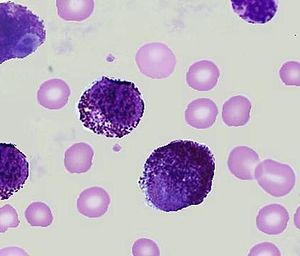Mast Cell Activation Syndrome

By Denise Clark, ND
Chronic health conditions can be complicated by many factors, including, lifestyle, diet, multiple infections, and immune dysfunction. One area that can be overlooked in some highly sensitive individuals is Mast Cell Activation Syndrome (MCAS). Traditionally, MCAS was considered a rare disease generally focusing on the mast cell mediators tryptase and histamine and the blatant symptoms of flushing and anaphylaxis. New research indicates that it play a large role in many chronic health conditions.
Mast cells are coordinators of our immune systems response to allergens, infections, and toxins. When activated they secrete over 200 chemical mediators, the most well known is histamine, serotonin and tryptase. A wide variety of stimuli can activate them, including, chronic infections, such as Lyme disease, mold toxicity, viruses, parasites, and environmental toxins.
Symptoms of MCAS can be similar to many other diseases, which makes it difficult to diagnose. The most common symptom is rapid onset after eating of flushing, palpitations, itching, tongue swelling, wheezing, gas, bloating, nausea, vomiting, abdominal pain, and dizziness. Research indicates that It is an under recognized contributor to neurologic and psychiatric symptoms1, as well as multiple chemical sensitivities. A key to diagnosis is if water or food, any food, sets off a reaction and in 3-5 minutes reproducible symptoms occur.
MCAS not an allergy. Something like mold or Lyme toxin comes in contact with activated mast cells and they release mediators. Testing for MCAS is not easy to get done, since a refrigerated centrifuge is needed. Negative tests do NOT rule it out.
If you believe you have symptoms of MCAS it is important to identify and treat the underlying cause as you concurrently diffuse the MCAS. It can be treated by the use of mast cell stabilizers, interfering with the mediators so that they have less effect and reducing the unavoidable effects of mediators.
Some treatments, include:
- Low Histamine Diet
- Diamine oxidase enzymes with meals to break down histamines in food
- H1 and H2 Blockers
- Natural and Over the Counter Mast Cell Stabilizers
- Leukotriene Inhibitors
- Tyrosine Kinase inhibitors
- Certain probiotics decrease histamine production
- Lactobacillus rhamnosus and bifidobacter species
1. Ann Med. 2016;48(3):190-201. doi: 10.3109/07853890.2016.1161231. Epub 2016 Mar 25.
Often seen, rarely recognized: mast cell activation disease–a guide to diagnosis and therapeutic options.; Afrin LB1, Butterfield JH2, Raithel M3, Molderings GJ4.

